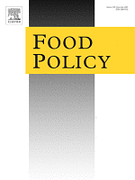Achieving food security: Focusing on the process to coordinate instruments
1 février 2011


.jpg)
.jpg)

Gashaw A., Bernard T., de Janvry A., Sadoulet E., Trachtman C. (2021) Introducing quality certification in staple food markets in Sub-Saharan Africa: Four Conditions for Successful Implementation. Food Policy, vol. 105, p 102173.